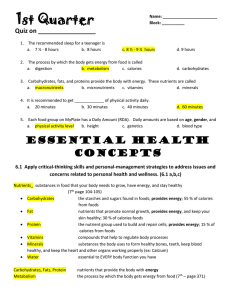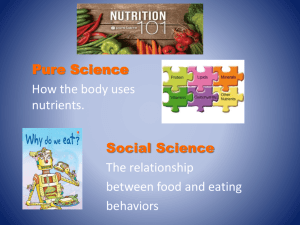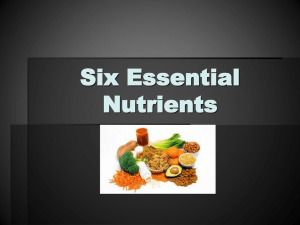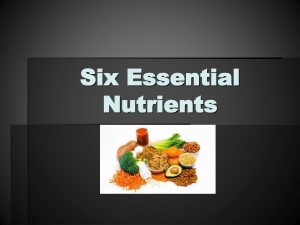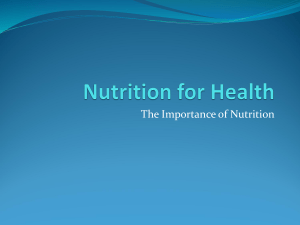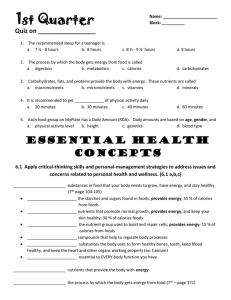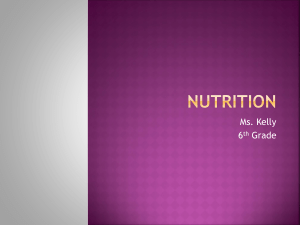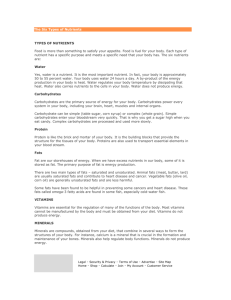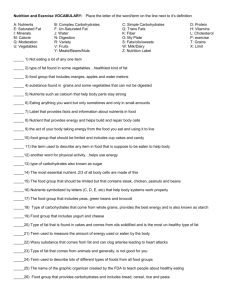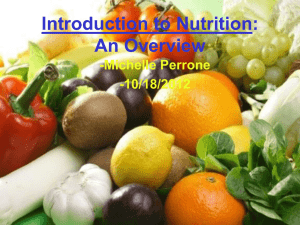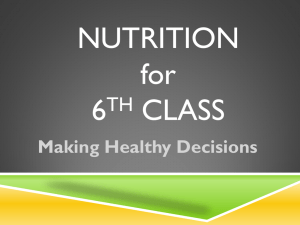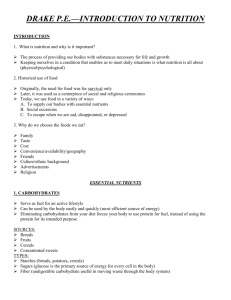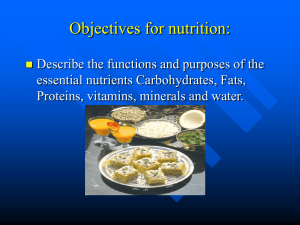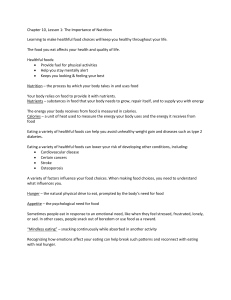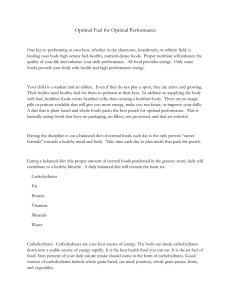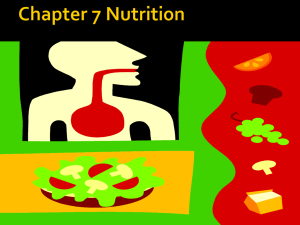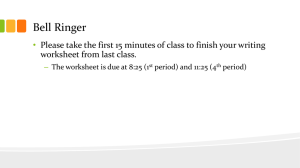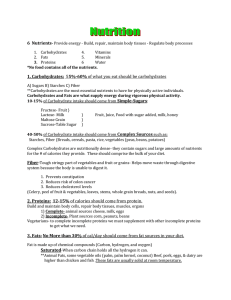Powepoint Assignment
advertisement
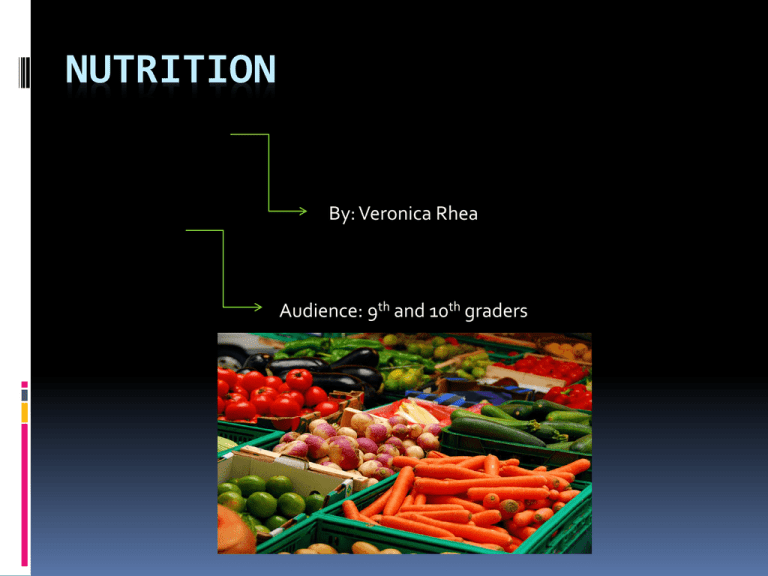
NUTRITION By: Veronica Rhea Audience: 9th and 10th graders Vocabulary Nutrition- The process by which your body takes in and uses food. The energy your body receives from food is measured in calories Calorie- A unit if heat used to measure the energy your body uses and the energy it receives from food The calories in the food you eat provide energy your body needs Nutrition affects lifelong health. Poor Nutrition can put you at risk to develop: 1) Cardiovascular Disease 2) Certain Cancers 3) Stroke 4) Osteoporosis What influences your food choices? Hunger- Natural physical drive to eat, prompted by the body’s need for food Appetite- psychological desire for food. Smell of good food makes you want more even when you are full! Food and Emotions Eat in response to emotional need Stressed, frustrated, lonely, sad, bored Leads to weight gain When appetite is depressed, perhaps when you are upset, body is not getting nutrients it needs! Food and Environment How your family and friends eats will influence how you eat! Unhealthy snacks, big portions, unhealthy meals Fast food, cheap & convenient Advertisements will try to influence your decisions. Nutrients Your body uses nutrients in many ways : Energy source To heal, build and repair tissue Sustain growth Help transport oxygen to cells 6 Types of Nutrients Carbohydrates Proteins Fats Vitamins Minerals Water Carbohydrates Starches and sugars found in foods Main source of energy 45-65% of your daily calories should come from carbohydrates (about 1500 calories) Fiber- tough complex carb that the body can not digest-moves waste through digestive system Carbohydrates Role: Gets broken down into their simplest forms, mostly glucose. Glucose- Main source of fuel, stored in body Proteins Nutrients the body uses to build and maintain its cells and tissues. amino acids Muscles, bones, skin and internal organs are constructed of protein. One egg=6 grams, Chicken Breast= 30 grams Fats Need a certain amount Provide small amount of energy Cardiovascular endurance= fat burn 3 types Unsaturated, saturated, trans Unsaturated Fats Vegetable oils, nuts and seeds. Eating these in moderate amounts can help lower risk of heart disease Saturated Fats Found mostly in animal based foods Meat, Dairy Consuming too much may lead to heart disease Trans Fat Margarine, snack foods, packaged baked goods- cookies crackers Raise your total blood cholesterol levels, increases risk of heart disease Fats are high in calories Consuming too many can lead to unhealthy weight gain and obesity Cholesterol- waxy, fat-like substance in your blood Excess cholesterol can Clog arteries, raising risk for heart disease! Vitamins Compounds found in food that help regulate many body processes. Vitamin C, folic acid and B vitamins-water soluble Dissolve into water and pass easily in the bloodstream during digestion Body doesn’t store these, unused amounts are removed by kidneys. Fat Soluble Vitamins Stored in body fat for later use. Vitamins (A,D,E,K) If you consume too many, can build up in body and become harmful More Info on Vitamins : http://edis.ifas.ufl.edu/fy890 Minerals Elements found in foods that are used by body We can not produce them, we need to consume them through food or supliments Calcium- promotes bone health Helps reduce risk of osteoporosis Commonly found in milk. Water Essential for body’s functions: Moving food through digestive system Digesting carbohydrates Transporting nutrients removing waste Storing, releasing heat Cooling body through perspiration Lubricating joints Cushioning eyes, brain and spinal chord Girls need 9 cups of fluids a day Boys- 13 fluids a day About 20% of your daily water intake comes from foods you eat, since most foods contain some water
